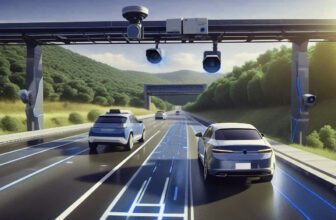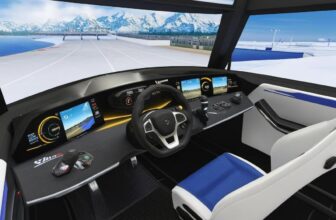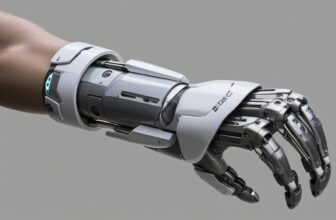
What is Digital Arts Technology?
Digital Arts Technology refers to the intersection of art and technology, utilizing digital tools, platforms, and methodologies to create, enhance, and distribute artistic content. This field encompasses a wide range of disciplines, including graphic design, animation, video production, interactive media, and even immersive experiences like virtual reality (VR) and augmented reality (AR). In essence, digital arts technology leverages the power of modern computing to revolutionize how we conceptualize and experience art.
The Evolution of Digital Arts Technology
The journey of digital arts technology began in the mid-20th century, closely tied to the advent of computers. Early pioneers like John Whitney experimented with computer-generated animations, laying the groundwork for what would become a flourishing field. As technology advanced, so did the tools and techniques available to artists. The 1980s and 1990s saw the rise of digital graphic design software like Adobe Photoshop and Illustrator, which revolutionized how artists approached visual content creation. By the 2000s, 3D modeling, video editing software, and game design tools opened up even more possibilities.
Today, digital arts technology is deeply integrated into numerous industries, from entertainment and advertising to education and healthcare. The tools have become more accessible, enabling both professionals and amateurs to explore and create stunning works of art.
Core Components of Digital Arts Technology
Digital arts technology encompasses various tools, platforms, and techniques, each tailored to specific aspects of artistic creation and expression. Below are some of the core components:
- Graphic Design and Digital Illustration
- Tools like Adobe Photoshop, Illustrator, and Procreate enable artists to create stunning 2D designs and illustrations. These platforms offer advanced features, such as layers, vector graphics, and brush customizations, making it possible to produce professional-quality work.
- 3D Modeling and Animation
- Software like Blender, Maya, and Cinema 4D are pivotal in creating three-dimensional models and animations. These tools are widely used in industries like gaming, film production, and architecture, allowing creators to design everything from realistic characters to intricate architectural structures.
- Video Production and Editing
- Applications like Adobe Premiere Pro, Final Cut Pro, and DaVinci Resolve empower creators to edit and produce high-quality video content. Features like timeline editing, special effects, and color grading make these tools indispensable for filmmakers and content creators.
- Interactive Media and Web Design
- Digital arts technology extends to interactive platforms, including websites and apps. Tools like Figma, Sketch, and Adobe XD are commonly used for designing user interfaces (UI) and user experiences (UX), ensuring that digital products are both functional and visually appealing.
- Immersive Technologies: VR and AR
- Virtual reality and augmented reality represent cutting-edge applications of digital arts technology. Platforms like Unity and Unreal Engine allow creators to design immersive experiences for gaming, training simulations, and virtual art galleries.
- Sound Design and Music Production
- Tools like Ableton Live, Logic Pro, and FL Studio are integral for creating and editing soundscapes, music, and audio effects. Sound design complements visual elements in digital arts, enhancing the overall experience.
Applications of Digital Arts Technology
Digital arts technology is not confined to a single domain but spans multiple industries and use cases:
- Entertainment Industry
- Movies, video games, and television shows heavily rely on digital arts technology for visual effects, animations, and character designs. Blockbuster films like “Avatar” and popular video games like “The Last of Us” showcase the incredible potential of these tools.
- Advertising and Marketing
- Advertisements and marketing campaigns leverage digital arts to create compelling visuals and videos that capture audience attention. From social media content to large-scale billboard designs, digital tools play a crucial role.
- Education and E-Learning
- Digital arts technology is used to create engaging educational content, including animations, interactive simulations, and virtual classrooms. This approach enhances learning by making complex concepts more accessible and engaging.
- Healthcare and Medical Visualization
- In the medical field, digital arts technology aids in creating 3D models of organs, surgical simulations, and educational animations that help professionals and patients alike understand complex medical procedures.
- Architecture and Real Estate
- Architects and real estate developers use 3D modeling and rendering tools to create realistic visualizations of buildings and spaces. Virtual tours, powered by VR, allow clients to experience properties before they are built.
- Fine Art and Galleries
- Many contemporary artists are embracing digital mediums to create unique artworks. Digital galleries and NFTs (non-fungible tokens) are also reshaping how art is bought, sold, and displayed.
The Impact of Digital Arts Technology on Creativity
Digital arts technology has democratized creativity, making tools accessible to a broader audience. Here are some key ways it has impacted the creative process:
- Increased Accessibility
- Affordable software and hardware have enabled more people to explore digital art. Platforms like Canva and free software like GIMP and Blender make professional-grade tools available to amateurs and hobbyists.
- Enhanced Collaboration
- Cloud-based platforms like Adobe Creative Cloud and collaborative tools like Figma allow artists to work together in real time, regardless of their physical location.
- Unlimited Possibilities
- The digital realm removes many of the constraints of traditional media. Artists can experiment with new styles, techniques, and effects that would be impossible or impractical with physical materials.
- Global Reach
- Digital platforms enable artists to share their work with a global audience. Social media, online galleries, and streaming platforms have made it easier than ever to gain recognition and build a following.
Challenges and Ethical Considerations
While digital arts technology offers immense possibilities, it also comes with challenges and ethical considerations:
- Copyright and Intellectual Property
- The ease of copying and sharing digital works raises questions about ownership and fair use. Artists must navigate a complex landscape to protect their creations.
- Digital Divide
- Despite increased accessibility, not everyone has equal access to digital tools and training, leading to a gap in opportunities.
- Over-reliance on Technology
- The availability of pre-made assets and templates can sometimes stifle originality, leading to homogeneity in artistic expression.
- Sustainability
- The energy consumption associated with digital technologies, especially in areas like NFTs and high-end rendering, raises environmental concerns.
The Future of Digital Arts Technology
The future of digital arts technology is exciting and full of potential. Advancements in artificial intelligence (AI), machine learning, and computational design are opening new frontiers for artists:
- AI-Assisted Creativity
- Tools like DALL-E, MidJourney, and Runway AI are enabling artists to generate images, videos, and designs with minimal input. This technology can serve as a starting point or inspiration for creative projects.
- Immersive Storytelling
- With VR and AR becoming more sophisticated, storytelling is evolving into fully immersive experiences. Interactive narratives and virtual art installations are poised to redefine how audiences engage with content.
- Blockchain and NFTs
- Blockchain technology is transforming how digital art is owned and monetized. NFTs provide a way for artists to sell unique digital assets, ensuring authenticity and royalties.
- Real-Time Collaboration
- As internet speeds and cloud computing improve, real-time, multi-user collaboration on large-scale projects will become increasingly seamless.
Digital Arts Technology is a transformative force reshaping how art is created, experienced, and appreciated. By bridging creativity with innovation, it offers endless possibilities for expression and communication. As technology continues to advance, the boundaries of digital art will expand, empowering artists to push the limits of what’s possible and inspiring audiences worldwide. Whether you’re a seasoned professional or a curious beginner, digital arts technology invites everyone to explore, create, and share their vision with the world.





